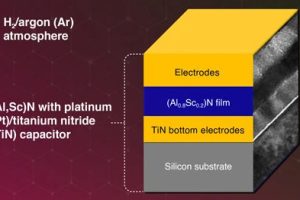We are asking readers of Electronics Weekly to choose the winner of the University Research Project of the Year in this year’s Elektra Awards. The award is kindly sponsored by Panasonic Industry Europe. You are invited to select the research project from the last year that you feel will make the largest impact on the commercial market in the next ...
Tag Archives: research
Battery can be used as physical structure
Chalmers University of Technology in Sweden has revealed its third generation of structural lithium ion battery. “We have created a battery made of carbon fibre composite that is as stiff as aluminium and energy-dense enough to be used commercially, claimed Chalmers researcher Richa Chaudhary. First revealed with KTH Royal Institute of Technology in 2018, by 2021 the material was achieving 24Wh/kg, ...
Peering into the life of neutrinos
Juno is a neutrino detector under construction 750m below Jiangmen in China. A collaboration between 17 countries, 730 scientists from 74 universities and national laboratories have worked on it. At its heart will be a 34.5m diameter acrylic sphere filled with 20,000 tons of liquid scintillator, which will emit photons if neutrinos interact with it – neutrinos sourced from eight ...
Air-stable organic flow batteries
Researchers at the Chinese Dalian Institute of Chemical Physics have produced stable organic redox compounds for use in aqueous flow batteries. “Organic redox-active molecules [ORAMs] are abundant and diverse, offering significant potential for energy storage, particularly in aqueous organic flow batteries,” according to the Institute. “However, ensuring the stability of the ORAMs during the charge and discharge process is critical, ...
Another glimpse behind the superconductivity curtain
Emerging electron pairs in an insulator hint of a hidden mechanism that could be exploited for designer ‘high-temperature’ superconductors. Superconductors need electrons to pair, and then many pairs to become coherent inside the material. “The electron pairs are telling us that they are ready to be superconducting, but something is stopping them,” said Ke-Jun Xu, a researcher at Stanford University’s ...
Modern twist on clockwork stores more energy
Forget exploiting carbon nanotubes electrochemically, and just wind them up like clockwork if you want to store energy. This is not quite the message that researchers at the University of Maryland Baltimore County are delivering, but it might as well be as a team from there is storing 2.1MJ/kg in twisted carbon nanotubes – more, weight-for-weight, than Li-ion chemistry can ...
Switch to scandium for high temperature ferroelectrics
Tokyo Tech has picked aluminium scandium nitride (AlScN) to make ferroelectric films that remain stable at up to 600°C in hydrogen. “This high stability makes them ideal for high-temperature manufacturing processes under the H2-included atmosphere used in fabricating advanced memory devices,” said the university. “Compared to existing ferroelectric materials, these films maintain their ferroelectric properties and crystal structure even after ...
Self-healing protection for perovskite solar
City University of Hong Kong (CityUHK) has developed another approach to quell the self-destructive tendencies of perovskite solar cells in the face of moisture. It is a corrosion inhibitor that tackles ionic defects in the perovskite layer within the solar cell stack, even those created after manufacture. “Applying a living passivator on the perovskite surfaces enhances their resistance to environmental ...
Scalable no-laser qubit integrated circuit for quantum computing has low noise
Researchers in Oxford have demonstrated a chip-scale trapped-ion quantum logic IC that works with all-electrical drive and a magnetic field. Because it avoids the need for per-qubit lasers, it is more easily scaled to many qubits, according to Oxford Ionics, the company behind it, which is working with the Universities of Oxford and Oregon. Oxford Ionics is also claiming a ...
Washable stretchable electronics for medical wearables
4mm diameter elastomer fibres are a promising substrate for electronics in clothing, according to Nottingham Trent University, which is investigating washable stretchable medical wearables. To make the electronic fibre, a long thin flexible PCB is helically wound along, and bonded to, the elastomer core, with its components facing inwards. “The basic idea has been around for centuries – it’s the ...
 Electronics Weekly Electronics Design & Components Tech News
Electronics Weekly Electronics Design & Components Tech News







